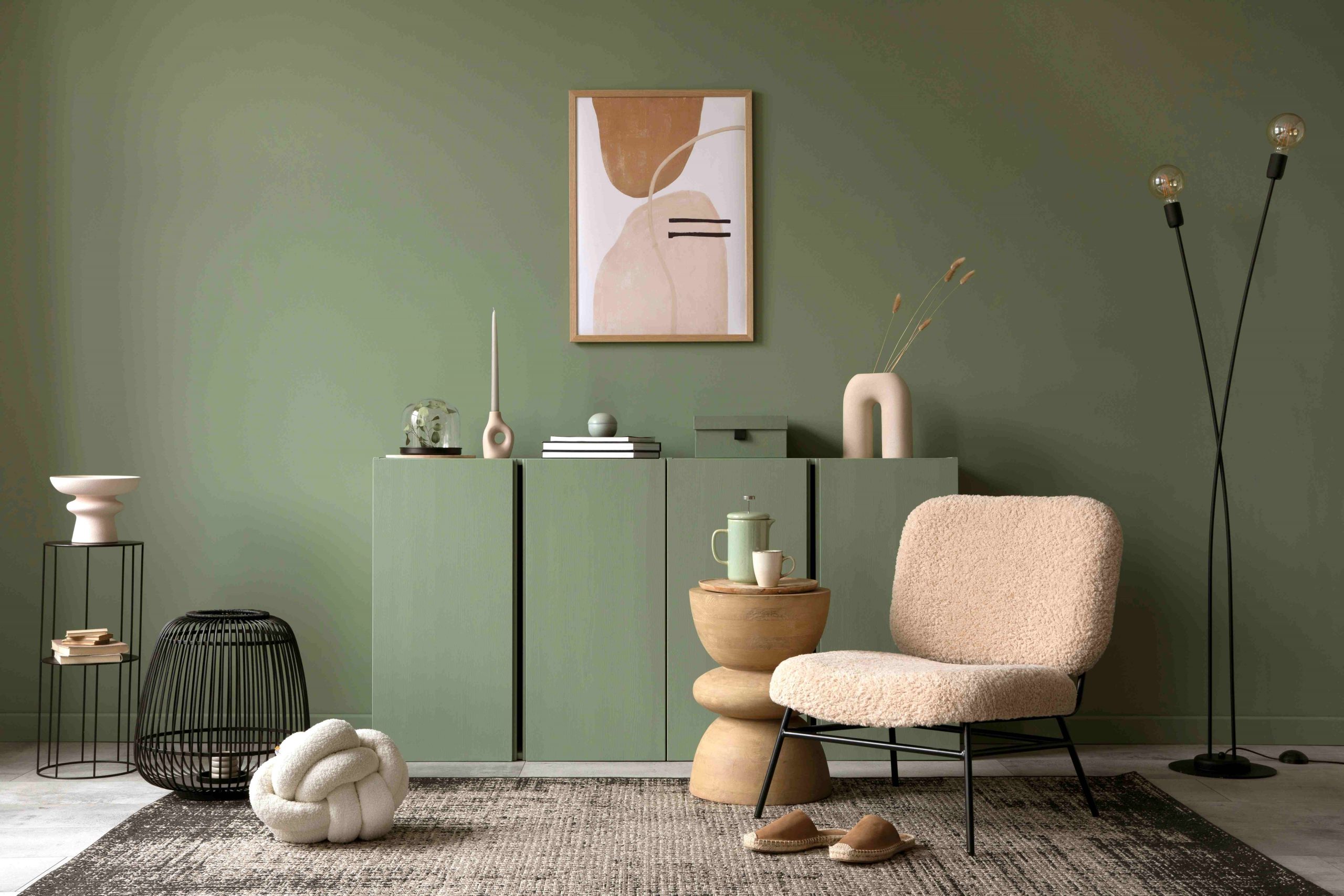BY NOW, as we pull together The Wall Street Journal’s 13th installment of annual home-design predictions, we can soothsay the tenor of many of the online reader comments: namely, skepticism. “This is how interior designers make money,” understandably jaded commenters will point out. “Next year they’ll say all that was ‘in’ is ‘out.’”
And, indeed, those “out” declarations, expedient or not, don’t always pan out. White bouclé upholstery, for example, which our pros’ 2023 predictions stuck a fork in, continues to cloak sofas and chairs unabated. And this will be the third year designers have sounded the death knell for the color gray.
Do you like gray? Of course you should live with what you love, regardless of trends. “Design with what truly resonates with you, what feeds your soul and nourishes you,” said Gillian Gillies, an interior designer in Ontario, Canada. Few decorators would disagree or impose a trendy look on you if it creeps you out.
But you have to admit, observing the trend cycle amuses, if only to see the experts eventually come around to your aesthetic. As one gleeful reader of last year’s list wrote, “Oh goodie, my dining room is back in vogue!” Enjoy.
OUT: Poor, Old Granny
The chintz, ruffles, needle crafts and nostalgic furnishings that have charmed younger generations of late, especially during the anxiety of the pandemic, seem to be losing steam. “The bright and busy mix of patterns that characterize ‘grandmillenial chic’ is being replaced by more restraint in design,” said Sara Hillery, a designer in Richmond, Va., who notes that interior schemes rather than filling every niche will create more visual resting places for the eye. Said Robin Gannon, a design professional in Lexington, Mass., “I feel we’re entering a period of being a little less flouncy.”
IN: Fun, Chic Granny
“This year, why not experiment with channeling your chic, Chanel-toting gran for a twist?” said Victoria Sass, principal at Prospect Refuge Studio in Minneapolis, whose team is championing “the kind of design that makes you feel comforted but put-together at the same time.” Sass points to plush but buttoned-up seating in sophisticated neutrals: “Perhaps there’s a tidy box-pleated skirt involved.” (Witness the new Enveloppé Chair by Colin King for Future Perfect.) Alexis Pew of Philadelphia architectural firm Kaminski + Pew sees the aesthetic as a foil to curved, plump furniture, and she’s forecasting “clean and classic, more-tailored profiles.”
OUT: Gloomy Exteriors
“In 2018 we painted a house in Hudson Valley a blackish-green color. Since then, the whole neighborhood has gone to the dark side,” said Maryline Damour, co-founder and principal designer at Damour Drake, in Kingston, N.Y. The wave of gray and black siding that washed over even sun-blazed territories like Texas is finally receding, which only makes sense to Dallas designer Jacklyn Caveny. “I always wondered if folks here really thought through painting their home a color that will absorb heat,” she said. “I love a chic black cabin exterior, but leave it in a misty canopy of forest redwood and fern, where it belongs.”
IN: Earthy Outsides
“With all the unfortunate news in the world, I’ll take joy in furniture and surfaces, colors and finishes,” said Oliver Furth. The Los Angeles designer and author of “OP! Optimistic Interiors” (Rizzoli, April 2024) sees exteriors taking on the hues that have been bringing nature-inspired comfort to interiors for the last several years. They include rich browns, bronze, creams and especially greens—like the sage shade shown above. Greenwich, Conn., designer Marcia Tucker values these colors’ “harmonious connection with the surroundings,” and Karen Frome, founder of New York’s Rise Projects, noted, “The earthier tones feel lived-in and relaxed.”
OUT: Bossy Brass
“Brass has had a hold on the design world for the last five years,” said Amalia Graziani, developer and designer at Noor Property Group, a real-estate development firm based in New York City. The tawny metal’s grip is loosening, however. “When taking in a room, the warm and yellow undertones of brass jump out like a contrasting color, adding to the noise of a space,” said Graziani. Keren Richter, principal designer at White Arrow, a studio in Brooklyn, admits she still employs unfinished brass but notes that golden hardware and fixtures pair better with traditional spaces than with contemporary furnishings.
IN: Cooler Metals
“We’re constantly seeing the pendulum swing from silver to brass and back again,” said Robin Standefer, of Roman & Williams Guild. Above: See the New York studio’s Oscar pendant in silver, a tone Standefer believes will lead in 2024. “It is powerful, timeless and versatile, and toes the line between traditional and modern.” Graziani recently injected lightness into an 1860s farmhouse with a chrome credenza adjacent to a modern teak dining set. Recently inspired by late fashion designer Halston’s 1970s Manhattan digs, Richter pulls in chrome, aluminum and stainless steel when she wants a “refreshing palate.”
OUT: All-Angles Architecture
Until now, most residential architecture has remained arrow straight—even if bulbous, bendy furniture has been taking the edge off it for years now, ramped up by a pandemic-era craving for soft, biophilic elements. “Linear design tends to feel a bit more harsh, less inviting than what we find in nature,” said Jen Samson, a designer in Laguna Beach, Calif, who notes a blunting of sharp edges in doorways and other millwork. Of built-in right angles, Sydney, Australia, interior designer Greg Natale said, “We are seeing a departure from rigid lines and unforgiving structures.”
IN: Curves in High Places
Arches again grace the openings of hallways and showers, and soft lines are insinuating their way into less-expected areas as well. See, for example, the smoothly curvy alcove and chimney in Natale’s project at right, and the rounded range hood and island in the kitchen, above, by Toronto designer Shauna Walton. Said Brad Ramsey, a designer in Nashville, Tenn, “The home is taking on some physical softness where it otherwise used to rely on furnishings to do so.” Sarah Solis, a designer in Malibu, Calif., likes arches’ timelessness, and how they help her balance “masculine” and “feminine” elements in her schemes.
OUT: Overused Ceruse
White oak, which has been ubiquitous underfoot, in our kitchens and where we sit, seems to have reached peak popularity. “We’re seeing a shift from the lighter tones of wood,” said Samson. But the pale timber with the biggest target on its back seems to be oak whose grain has been highlighted with a white material, a process known as cerusing. “The light, almost bleached look of cerused oak is gradually being perceived as lacking depth and warmth,” said New York designer Kati Curtis, who adds that while rich woods bring a sense of permanence, “cerused light oak often appears fleeting and ephemeral.”
IN: Old-World Wood
Design pros and their clients are embracing the moody grain of deeply toned wood such as mahogany, rosewood and walnut, like that of the vintage nightstand, above, available on Chairish. Curtis’s reasoning: “Whether used in flooring, furniture, or millwork, these woods add a layer of sophistication and a sense of grounding.” Nicole Hirsch, a Boston designer who recently paneled a condo bedroom in walnut in that city’s St. Regis Residences, contrasts warmer woods with light, airy colors, so their richness stands out but doesn’t darken a room. Richter, meanwhile, has turned to these timbers as a way to “channel that old-world European feeling.”
The Wall Street Journal is not compensated by retailers listed in its articles as outlets for products. Listed retailers frequently are not the sole retail outlets.



